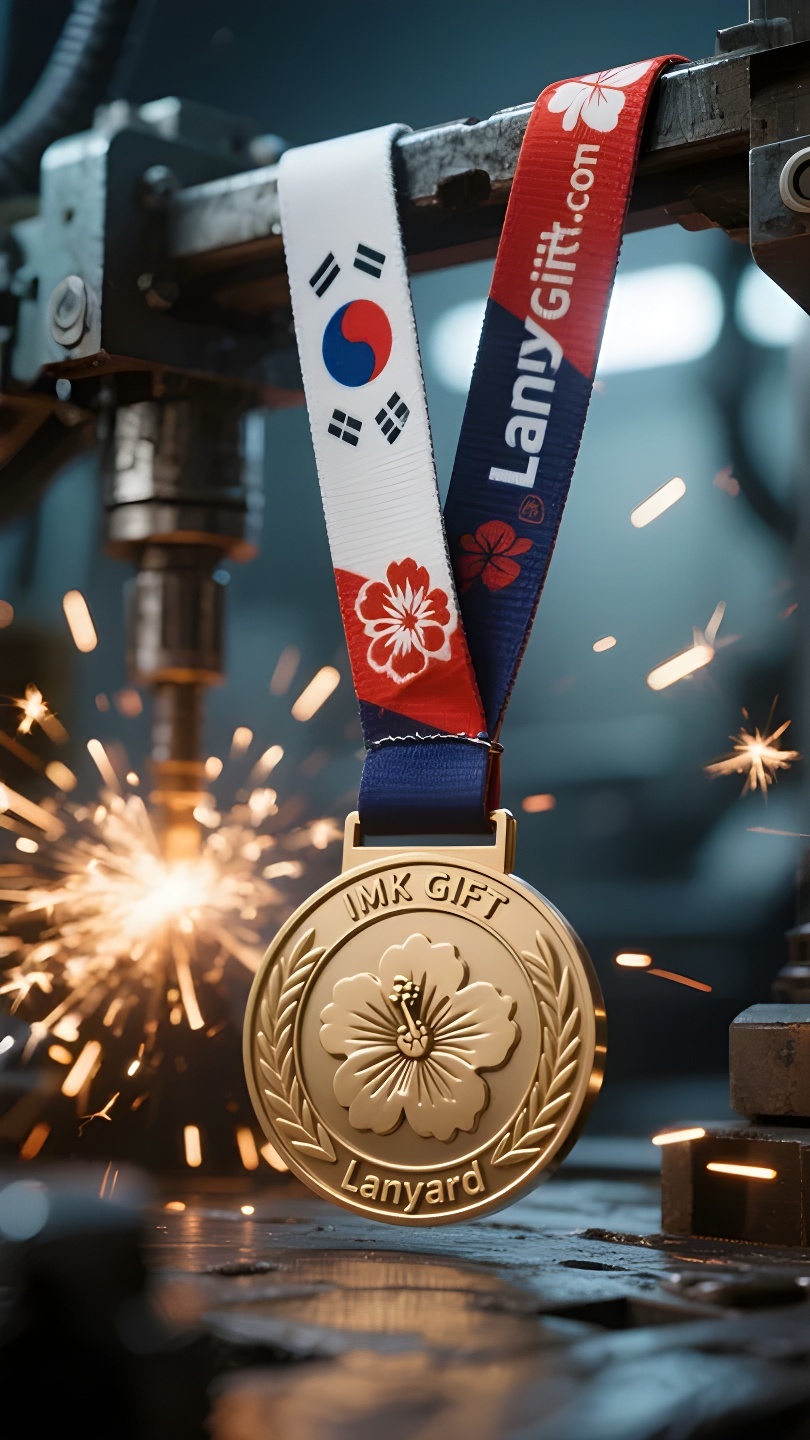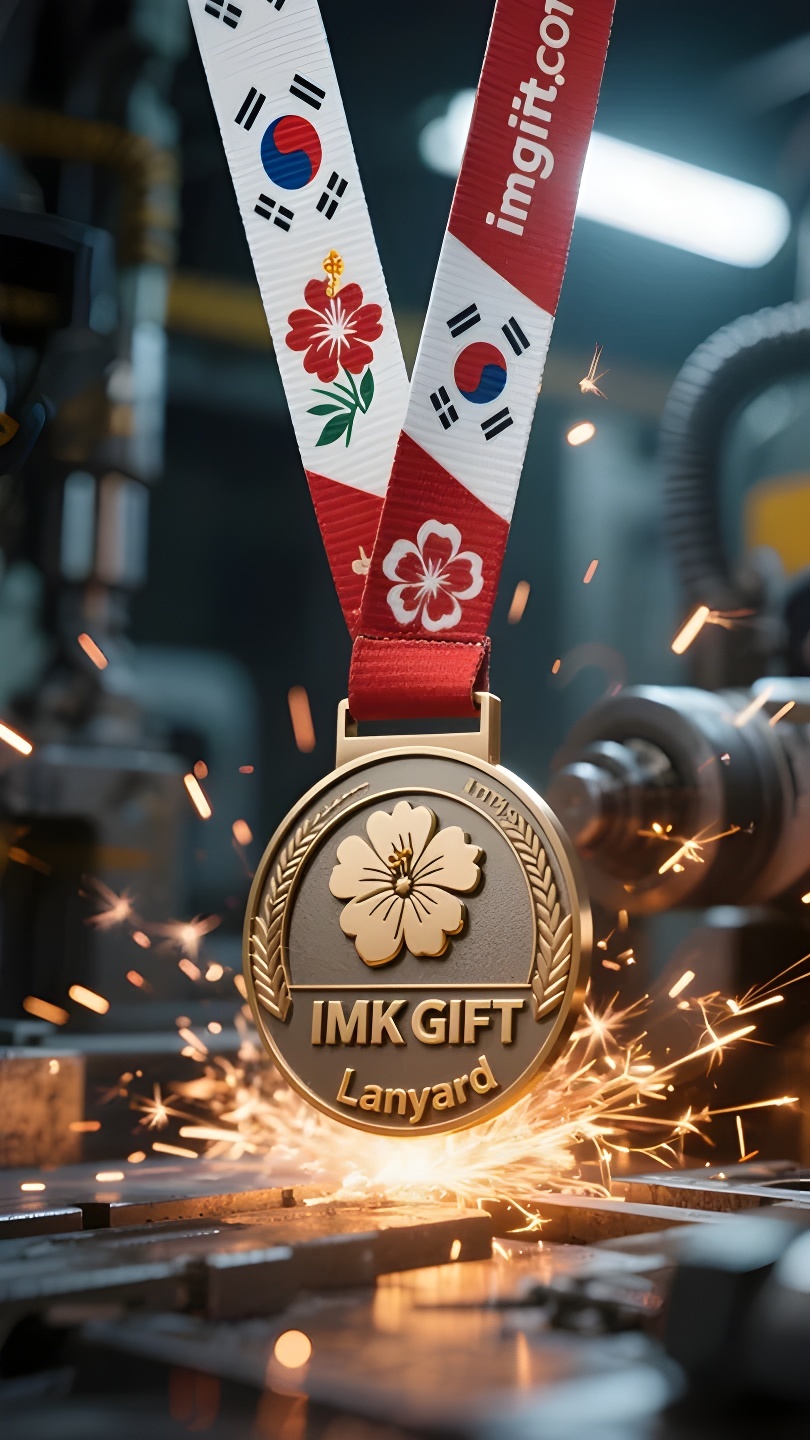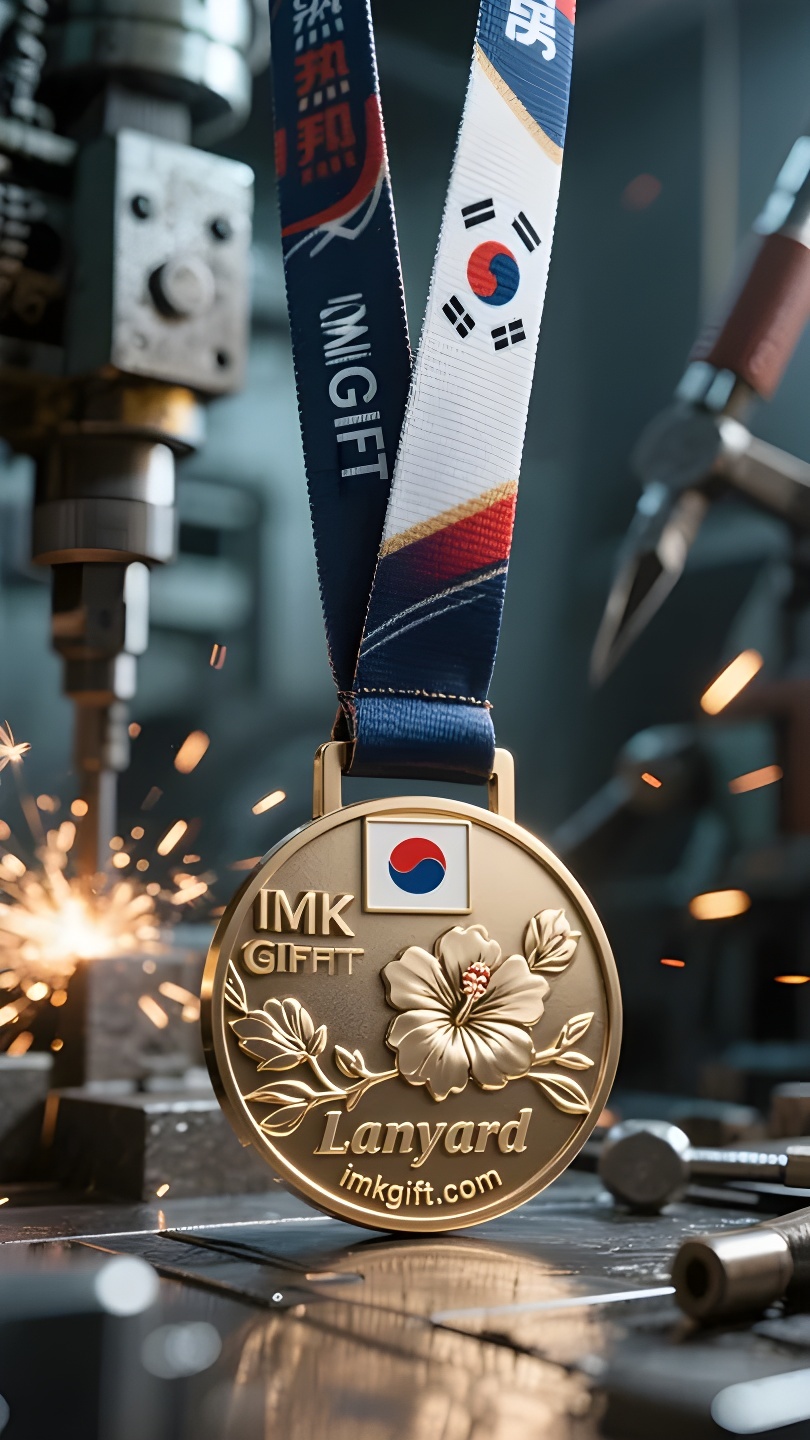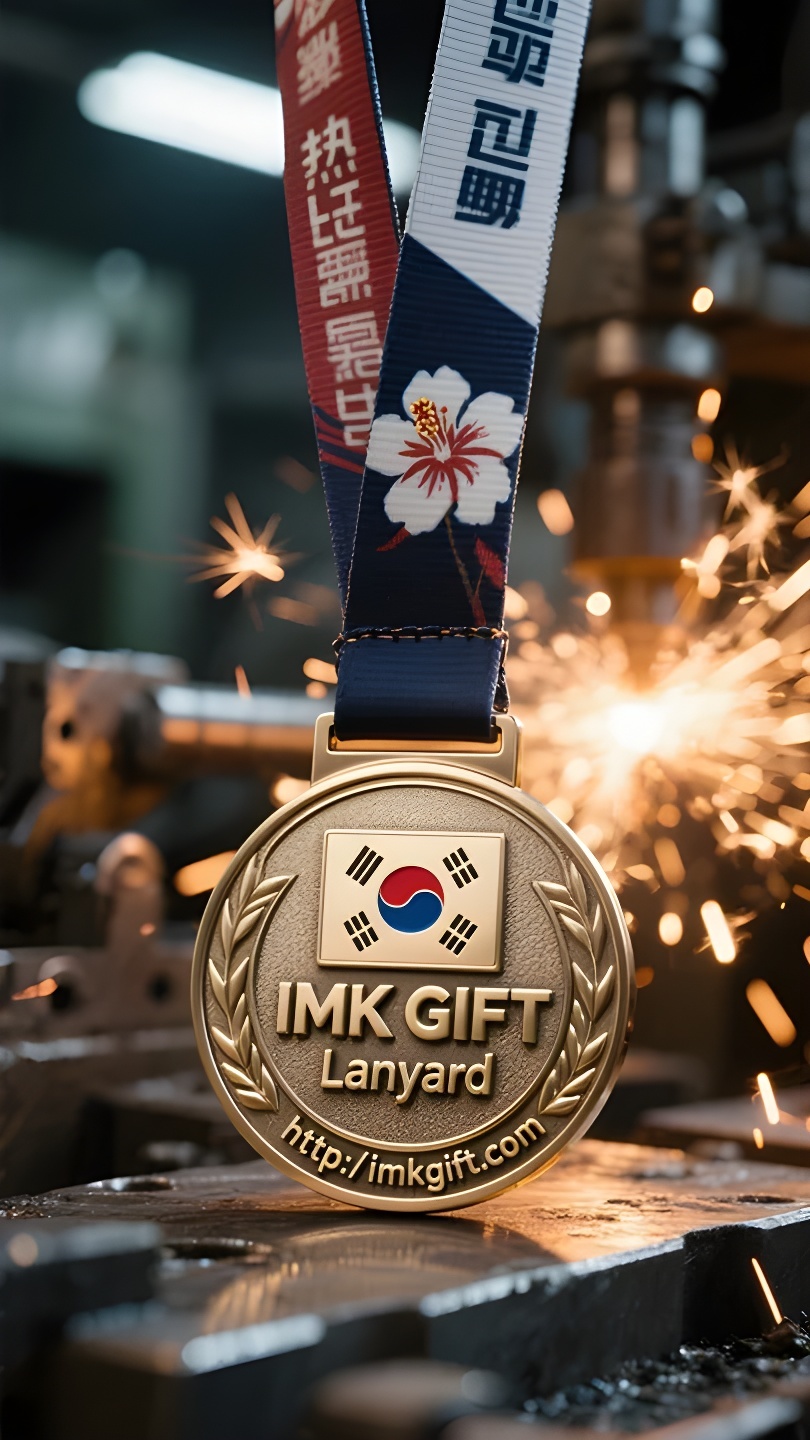in983-무궁화꽃이-필-때-국기가-휘날릴-때
▼
8월의 맑은 하늘 아래, 태극기와 무궁화는 민족의 정신적 코드를 함께 엮어냅니다. 광복절 전날, 인천 자유공원에서 열린 기념 행사에서 자원봉사자들은 참가자들의 가슴에 무궁화 메달을 엄숙하게 달아주었습니다. 이는 평범한 장식이 아니라 민족의 정신을 응축한 작은 기념물입니다. 태극기의 4괘는 하늘, 땅, 물, 불을 상징하며, 무궁화가 아침과 저녁에 피어나는 모습은 영원한 생명을 감추고 있습니다. 무궁화 메달이 전통 매듭 기법으로 짜여지듯, 각각의 매듭은 어려움 속에서도 한국인의 지혜를 상징합니다. 1997년 IMF 외환위기 당시 “국민 금메달”은 국민의 자발적인 기부로 만들어졌고, 코로나19 팬데믹 당시에는 수많은 시민들이 마스크 재봉틀을 이용해 방호망을 엮었습니다. 이러한 집단적 기억은 목걸이의 경도와 위도로 변형되어 개인의 운명을 국가의 운명과 밀접하게 연결합니다. 메달의 무궁화 꽃잎은 포개져 피어나는데, 이는 태극기 중앙에 있는 태극의 음양과 일치합니다. 겉보기에 가벼운 금속 메달에는 “고난은 결국 영광의 열매를 맺는다”는 동양 철학이 담겨 있습니다. 전쟁의 폐허에서 한강의 기적까지, 건국에서 문화를 거쳐 K팝 열풍까지, 모든 국가의 부흥은 땅속 깊이 묻힌 뿌리에서 시작되었습니다. 무궁화가 비바람에 시들어도 다음 날 다시 피어나듯, 한국인들은 좌절을 단련의 기회로 여깁니다. 아침 햇살이 무궁화 줄의 경도와 위도를 뚫고 태극기의 붉고 푸른 소용돌이 위로 비칠 때, 우리는 역사적인 상징일 뿐만 아니라 결코 포기하지 않는 생명력을 봅니다. 가슴에 착용하는 이 메달은 진정한 영광은 연단에 있는 것이 아니라, 운명의 매듭을 짜는 모든 평범한 사람의 손끝에 있다는 것을 상기시켜줍니다.
Under the clear sky of August in South Korea, the Taegeukgi and the hibiscus flower together weave the spiritual code of the nation. On the eve of Liberation Day, at the commemorative event in Incheon Freedom Park, volunteers solemnly put the hibiscus flower lanyard medal on the chest of the participants – this is not an ordinary decoration, but a miniature monument that condenses the national spirit. The four hexagrams of the Taegeukgi imply heaven, earth, water and fire, while the morning opening and evening falling of the hibiscus flower hides the endless life. Just as the hibiscus flower lanyard is woven with traditional knotting art, each knot symbolizes the wisdom of Koreans in the face of difficulties: during the IMF financial crisis in 1997, the “national gold medal” was forged by the people’s spontaneous donations; during the COVID-19 pandemic, countless ordinary people used mask sewing machines to weave a protective net. These collective memories are transformed into the longitude and latitude on the lanyard, closely linking individual destiny with national destiny. The hibiscus petals on the medal are stacked and blooming, which coincides with the Tai Chi Yin and Yang in the center of the Korean national flag. This seemingly light metal medal carries the Eastern philosophy that “suffering will eventually bear the fruit of glory.” From the ruins of war to the miracle of the Han River, from the founding of a nation through culture to the K-Pop craze, every national rise began with roots buried deep underground. Just as the hibiscus flower will still bloom the next day even if it is broken by wind and rain, Koreans regard setbacks as opportunities for tempering. When the morning light penetrates the longitude and latitude of the hibiscus flower hanging rope and projects on the red and blue vortex of the Taegeukgi, we see not only a historical symbol, but also a vitality that never gives up. This medal worn in the heart reminds us that the true glory is not on the podium, but on the fingertips of every ordinary person weaving the knot of fate.
在韩国八月的晴空下,太极旗与木槿花共同编织着民族的精神密码。光复节前夕,仁川自由公园的纪念活动里,志愿者将木槿花挂绳奖牌郑重佩戴在参与者胸前——这不是普通的装饰,而是一枚凝结着国民精神的微型丰碑。
太极旗的四卦暗含天地水火,木槿花的朝开暮落却暗藏生生不息。正如木槿花挂绳采用传统结艺编织,每道绳结都象征着韩国人面对困境时的智慧:1997年IMF金融危机时,民众自发捐金铸就的”国民金牌”;新冠疫情期间,无数普通人用口罩缝纫机织就的防护网。这些集体记忆化作挂绳上的经纬,将个体命运与国运紧紧相系。
奖牌上的木槿花瓣层叠绽放,暗合韩国国旗中央的太极阴阳。这枚看似轻盈的金属牌,承载着”苦难终将结出荣耀之果”的东方哲学。从战争废墟到汉江奇迹,从文化立国到K-Pop风潮,每一次民族腾飞都始于深埋地下的根系。就像木槿花即便被风雨摧折,次日仍会开出新蕾,韩国人将挫折视为淬炼的契机。
当晨光穿透木槿花挂绳的经纬,投射在太极旗的红蓝漩涡上,我们看到的不仅是历史符号,更是永不言弃的生命力。这枚佩戴在心的奖牌提醒着:真正的荣耀不在奖台,而在每个平凡人编织命运绳结的指尖。
▼
Contact Us
📞 Tel: +0086-760-85286839
📧 Email: sales3@imkgift.com








